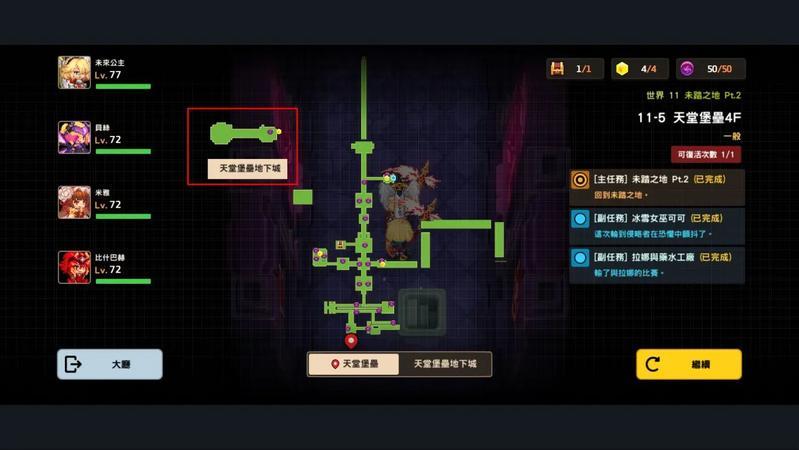Paddle2.0:浅析并实现 LV-ViT 模型
时间:2025-07-18 作者:游乐小编
本文探索提升ViT性能的训练技巧,提出LV-ViT模型。其改进包括增加网络深度、显式引入归纳偏置、改进残差连接、采用Re-labeling和Token Labeling策略及MixToken数据增广等。模型在ImageNet上性能优异,如LV-ViT-L在512分辨率下Top1精度达86.4,超越多种方案。

引入
本文探索了用于提升 ViT 性能的各种训练技巧通过一系列实验对比、改进与组合,本文所提方案取得了 SOTA 方案超越了 EfficientNet、T2TViT、DeiT、Swin Transformer、CaiT 等方案相关资料
论文:All Tokens Matter: Token Labeling for Training Better Vision Transformers最新实现:zihangJiang/TokenLabeling主要改进
本文主要探索了提升 ViT 性能的各种训练技巧对比原版 ViT 模型和 LV-ViT 模型的训练 Pipeline 的总体示意图如下:
Network Depth
众所周知,提升模型的深度有助于改善模型的泛化性能与容量。作者通过逐渐提升基线 ViT 的深度对其如何影响 ViT 的性能进行了研究。由于添加更多的模块不可避免会引入更多的模型参数,作者减少前馈层的隐含层维度(作者发现对模型性能几乎没有负面影响)。Explicit inductive bias
ViT 旨在通过自注意力进行全局信息集成,并不会像 CNN 一样显式引入归纳偏置。尽管 DeepVit 一文提到:当无显式归纳偏置时,底层模块仍可以隐式学习之。然而,MHSA 计算代价要远高于简单的卷积。正如 T2T-ViT 一文所提到:Patch 嵌入中的 Tokenization 难以捕获低级与局部结构信息,导致了训练过程中的较低的采样效率。考虑到这些问题,作者提出直接添加更多的卷积层增强块嵌入模块的容量以显式引入归纳偏置。此外,为从更大感受野提取信息,作者采用了更小 Stride 的卷积以提供近邻 Token 的重叠信息。Rethinking residual connection
假设LayerNorm表示为LN,作者重写Transformer模块的计算如下:
对此,作者解释为:通过逐渐添加源自其他 Token 的信息调整输入。
原始的 ViT 采用固定比例 1 添加信息调整,作者提出采用更小比例 α 重缩放残差特征值:
由于更少的信息经过残差分支,这种方式可以增强残差链接;调整残差分支的缩放因子可以改善模型的泛化性能。
Re-labeling
RandomCrop 是训练阶段最常用的一种数据增光方法。ImageNet 是一种单标签的基准数据集,然而其标签并不总是精确,甚至裁剪后的图像可能并不包含标签对应的目标。为解决该问题,作者在训练数据及中添加了 Re-labeling 策略,为每个图像重设一个 K=1000 维得分图以得到更精确的标签。不同于知识蒸馏需要老师模型在线生成监督标签,Re-labeling 是一种廉价操作且可视作预处理操作。在训练过程中,仅需对每个裁剪图像计算 K 维稠密得分。因此能够以近乎可忽略的额外计算改善标签质量。Token Labeling
由于可以从所有 Token 中收集全局信息,为 ViT 添加特定的 Token(比如 cls)是一种常见操作。已有研究表明:在所有 Token 中定义训练目标有助于改善训练时的采样效率。更进一步,基于 Re-labeling 提供的稠密得分图,可以采用它为每个图像块与其对应 Token 提供一个独特标签,作者称之为 Token Labeling。具体来说,作者添加了一个 Token Labeling 损失函数,它利用了每个训练图像的稠密得分图并计算每个 Token 与对应标签之间的交叉熵损失作为辅助损失。假设 ViT 的输出为 ,K 维得分图为 ,整个图像的标签为 。辅助损失定义如下:注:H 表示交叉熵损失。因此,总体损失定义如下:
MixToken
已有研究表明:MixUp、CutMix 等数据增广方法有助于提升 ViT 的性能与鲁棒性。然而,ViT 依赖于块标记化将每个输入图像转换成 Token 序列,本文所提 Token Labeling 策略同样是在块层面进行处理。如果我们直接将 CutMix 用于原始图像,某些图像块可能包含来自两个图像的内容,进而导致混合区域问题,见下图。
注:M 的生成方式与 CutMix 相同。
对于每个标签,我们采用类似方式混合:
CLS 的标签重写如下:
模型搭建
介绍完 LV-ViT 模型的一些改进接下来就完整的搭建一下模型模型组网
In [3]import numpy as npimport paddleimport paddle.nn as nnfrom common import DropPath, Identityfrom common import trunc_normal_, ones_, zeros_from common import to_2tuple, add_parameterclass GroupLinear(nn.Layer): """ Group Linear operator """ def __init__(self, in_planes, out_channels, groups=1, bias=True): super(GroupLinear, self).__init__() assert in_planes % groups == 0 assert out_channels % groups == 0 self.in_dim = in_planes self.out_dim = out_channels self.groups = groups self.group_in_dim = int(self.in_dim / self.groups) self.group_out_dim = int(self.out_dim / self.groups) self.group_weight = add_parameter( self, paddle.zeros((self.groups, self.group_in_dim, self.group_out_dim)) ) if bias is True: self.group_bias = add_parameter(self, paddle.zeros((self.out_dim,))) else: self.group_bias = None def forward(self, x): t, b, d = x.shape x = x.reshape((t * b, self.groups, int(d / self.groups))) x = x.transpose((1, 0, 2)) x = paddle.bmm(x, self.group_weight) x = x.transpose((1, 0, 2)) x = x.reshape((t, b, self.out_dim)) if self.group_bias is not None: x = x + self.group_bias return xclass Mlp(nn.Layer): """ MLP with support to use group linear operator """ def __init__( self, in_features, hidden_features=None, out_features=None, act_layer=nn.GELU, drop=0.0, group=1, ): super().__init__() out_features = out_features or in_features hidden_features = hidden_features or in_features if group == 1: self.fc1 = nn.Linear(in_features, hidden_features) self.fc2 = nn.Linear(hidden_features, out_features) else: self.fc1 = GroupLinear(in_features, hidden_features, group) self.fc2 = GroupLinear(hidden_features, out_features, group) self.act = act_layer() self.drop = nn.Dropout(drop) def forward(self, x): x = self.fc1(x) x = self.act(x) x = self.drop(x) x = self.fc2(x) x = self.drop(x) return xclass Attention(nn.Layer): """ Multi-head self-attention with some modification to support different num_heads and head_dim. """ def __init__( self, dim, num_heads=8, head_dim=None, qkv_bias=False, qk_scale=None, attn_drop=0.0, proj_drop=0.0, ): super().__init__() self.num_heads = num_heads if head_dim is not None: self.head_dim = head_dim else: head_dim = dim // num_heads self.head_dim = head_dim self.scale = qk_scale or head_dim ** -0.5 self.qkv = nn.Linear( dim, self.head_dim * self.num_heads * 3, bias_attr=qkv_bias ) self.attn_drop = nn.Dropout(attn_drop) self.proj = nn.Linear(self.head_dim * self.num_heads, dim) self.proj_drop = nn.Dropout(proj_drop) def forward(self, x): B, N, C = x.shape qkv = ( self.qkv(x) .reshape((B, N, 3, self.num_heads, self.head_dim)) .transpose((2, 0, 3, 1, 4)) ) # B,heads,N,C/heads q, k, v = qkv[0], qkv[1], qkv[2] # trick here to make q@k.t more stable attn = (q * self.scale) @ k.transpose((0, 1, 3, 2)) attn = nn.functional.softmax(attn, axis=-1) attn = self.attn_drop(attn) x = ( (attn @ v) .transpose((0, 2, 1, 3)) .reshape((B, N, self.head_dim * self.num_heads)) ) x = self.proj(x) x = self.proj_drop(x) return xclass Block(nn.Layer): """ Pre-layernorm transformer block """ def __init__( self, dim, num_heads, head_dim=None, mlp_ratio=4.0, qkv_bias=False, qk_scale=None, drop=0.0, attn_drop=0.0, drop_path=0.0, act_layer=nn.GELU, norm_layer=nn.LayerNorm, group=1, skip_lam=1.0, ): super().__init__() self.dim = dim self.mlp_hidden_dim = int(dim * mlp_ratio) self.skip_lam = skip_lam self.norm1 = norm_layer(dim) self.attn = Attention( dim, num_heads=num_heads, head_dim=head_dim, qkv_bias=qkv_bias, qk_scale=qk_scale, attn_drop=attn_drop, proj_drop=drop, ) self.drop_path = DropPath(drop_path) if drop_path > 0.0 else Identity() self.norm2 = norm_layer(dim) self.mlp = Mlp( in_features=dim, hidden_features=self.mlp_hidden_dim, act_layer=act_layer, drop=drop, group=group, ) def forward(self, x): x = x + self.drop_path(self.attn(self.norm1(x))) / self.skip_lam x = x + self.drop_path(self.mlp(self.norm2(x))) / self.skip_lam return xclass MHABlock(nn.Layer): """ Multihead Attention block with residual branch """ def __init__( self, dim, num_heads, head_dim=None, mlp_ratio=4.0, qkv_bias=False, qk_scale=None, drop=0.0, attn_drop=0.0, drop_path=0.0, act_layer=nn.GELU, norm_layer=nn.LayerNorm, group=1, skip_lam=1.0, ): super().__init__() self.dim = dim self.norm1 = norm_layer(dim) self.skip_lam = skip_lam self.attn = Attention( dim, num_heads=num_heads, head_dim=head_dim, qkv_bias=qkv_bias, qk_scale=qk_scale, attn_drop=attn_drop, proj_drop=drop, ) self.drop_path = DropPath(drop_path) if drop_path > 0.0 else Identity() def forward(self, x): x = x + self.drop_path(self.attn(self.norm1(x * self.skip_lam))) / self.skip_lam return xclass FFNBlock(nn.Layer): """ Feed forward network with residual branch """ def __init__( self, dim, num_heads, head_dim=None, mlp_ratio=4.0, qkv_bias=False, qk_scale=None, drop=0.0, attn_drop=0.0, drop_path=0.0, act_layer=nn.GELU, norm_layer=nn.LayerNorm, group=1, skip_lam=1.0, ): super().__init__() self.skip_lam = skip_lam self.dim = dim self.mlp_hidden_dim = int(dim * mlp_ratio) self.drop_path = DropPath(drop_path) if drop_path > 0.0 else Identity() self.norm2 = norm_layer(dim) self.mlp = Mlp( in_features=dim, hidden_features=self.mlp_hidden_dim, act_layer=act_layer, drop=drop, group=group, ) def forward(self, x): x = x + self.drop_path(self.mlp(self.norm2(x * self.skip_lam))) / self.skip_lam return xclass HybridEmbed(nn.Layer): """CNN Feature Map Embedding Extract feature map from CNN, flatten, project to embedding dim. """ def __init__( self, backbone, img_size=224, feature_size=None, in_chans=3, embed_dim=768 ): super().__init__() assert isinstance(backbone, nn.Layer) img_size = to_2tuple(img_size) self.img_size = img_size self.backbone = backbone if feature_size is None: with paddle.no_grad(): training = backbone.training if training: backbone.eval() o = self.backbone( paddle.zeros((1, in_chans, img_size[0], img_size[1])) )[-1] feature_size = o.shape[-2:] feature_dim = o.shape[1] backbone.train(training) else: feature_size = to_2tuple(feature_size) feature_dim = self.backbone.feature_info.channels()[-1] self.num_patches = feature_size[0] * feature_size[1] self.proj = nn.Conv2D(feature_dim, embed_dim, kernel_size=1) def forward(self, x): x = self.backbone(x)[-1] x = self.proj(x) return xclass PatchEmbedNaive(nn.Layer): """ Image to Patch Embedding """ def __init__(self, img_size=224, patch_size=16, in_chans=3, embed_dim=768): super().__init__() img_size = to_2tuple(img_size) patch_size = to_2tuple(patch_size) num_patches = (img_size[1] // patch_size[1]) * (img_size[0] // patch_size[0]) self.img_size = img_size self.patch_size = patch_size self.num_patches = num_patches self.embed_dim = embed_dim self.proj = nn.Conv2D( in_chans, embed_dim, kernel_size=patch_size, stride=patch_size ) def forward(self, x): B, C, H, W = x.shape assert ( H == self.img_size[0] and W == self.img_size[1] ), f"Input image size ({H}*{W}) doesn't match model ({self.img_size[0]}*{self.img_size[1]})." x = self.proj(x) return xclass PatchEmbed4_2(nn.Layer): """ Image to Patch Embedding with 4 layer convolution """ def __init__(self, img_size=224, patch_size=16, in_chans=3, embed_dim=768): super().__init__() new_patch_size = to_2tuple(patch_size // 2) img_size = to_2tuple(img_size) patch_size = to_2tuple(patch_size) num_patches = (img_size[1] // patch_size[1]) * (img_size[0] // patch_size[0]) self.img_size = img_size self.patch_size = patch_size self.num_patches = num_patches self.embed_dim = embed_dim self.conv1 = nn.Conv2D( in_chans, 64, kernel_size=7, stride=2, padding=3, bias_attr=False ) # 112x112 self.bn1 = nn.BatchNorm2D(64) self.relu = nn.ReLU() self.conv2 = nn.Conv2D( 64, 64, kernel_size=3, stride=1, padding=1, bias_attr=False ) # 112x112 self.bn2 = nn.BatchNorm2D(64) self.conv3 = nn.Conv2D( 64, 64, kernel_size=3, stride=1, padding=1, bias_attr=False ) self.bn3 = nn.BatchNorm2D(64) self.proj = nn.Conv2D( 64, embed_dim, kernel_size=new_patch_size, stride=new_patch_size ) def forward(self, x): x = self.conv1(x) x = self.bn1(x) x = self.relu(x) x = self.conv2(x) x = self.bn2(x) x = self.relu(x) x = self.conv3(x) x = self.bn3(x) x = self.relu(x) x = self.proj(x) # [B, C, W, H] return xclass PatchEmbed4_2_128(nn.Layer): """ Image to Patch Embedding with 4 layer convolution and 128 filters """ def __init__(self, img_size=224, patch_size=16, in_chans=3, embed_dim=768): super().__init__() new_patch_size = to_2tuple(patch_size // 2) img_size = to_2tuple(img_size) patch_size = to_2tuple(patch_size) num_patches = (img_size[1] // patch_size[1]) * (img_size[0] // patch_size[0]) self.img_size = img_size self.patch_size = patch_size self.num_patches = num_patches self.embed_dim = embed_dim self.conv1 = nn.Conv2D( in_chans, 128, kernel_size=7, stride=2, padding=3, bias_attr=False ) # 112x112 self.bn1 = nn.BatchNorm2D(128) self.relu = nn.ReLU() self.conv2 = nn.Conv2D( 128, 128, kernel_size=3, stride=1, padding=1, bias_attr=False ) # 112x112 self.bn2 = nn.BatchNorm2D(128) self.conv3 = nn.Conv2D( 128, 128, kernel_size=3, stride=1, padding=1, bias_attr=False ) self.bn3 = nn.BatchNorm2D(128) self.proj = nn.Conv2D( 128, embed_dim, kernel_size=new_patch_size, stride=new_patch_size ) def forward(self, x): x = self.conv1(x) x = self.bn1(x) x = self.relu(x) x = self.conv2(x) x = self.bn2(x) x = self.relu(x) x = self.conv3(x) x = self.bn3(x) x = self.relu(x) x = self.proj(x) # [B, C, W, H] return xdef get_block(block_type, **kargs): if block_type == "mha": # multi-head attention block return MHABlock(**kargs) elif block_type == "ffn": # feed forward block return FFNBlock(**kargs) elif block_type == "tr": # transformer block return Block(**kargs)def rand_bbox(size, lam): W = size[2] H = size[3] cut_rat = np.sqrt(1.0 - lam) cut_w = np.int(W * cut_rat) cut_h = np.int(H * cut_rat) # uniform cx = np.random.randint(W) cy = np.random.randint(H) bbx1 = np.clip(cx - cut_w // 2, 0, W) bby1 = np.clip(cy - cut_h // 2, 0, H) bbx2 = np.clip(cx + cut_w // 2, 0, W) bby2 = np.clip(cy + cut_h // 2, 0, H) return bbx1, bby1, bbx2, bby2def get_dpr(drop_path_rate, depth, drop_path_decay="linear"): if drop_path_decay == "linear": # linear dpr decay # stochastic depth decay rule dpr = np.linspace(0, drop_path_rate, depth) elif drop_path_decay == "fix": # use fixed dpr dpr = [drop_path_rate] * depth else: # use predefined drop_path_rate list assert len(drop_path_rate) == depth dpr = drop_path_rate return dprclass LV_ViT(nn.Layer): """Vision Transformer with tricks Arguements: p_emb: different conv based position embedding (default: 4 layer conv) skip_lam: residual scalar for skip connection (default: 1.0) order: which order of layers will be used (default: None, will override depth if given) mix_token: use mix token augmentation for batch of tokens (default: False) return_dense: whether to return feature of all tokens with an additional aux_head (default: False) """ def __init__( self, img_size=224, patch_size=16, in_chans=3, embed_dim=768, depth=12, num_heads=12, mlp_ratio=3.0, qkv_bias=False, qk_scale=None, drop_rate=0.0, attn_drop_rate=0.0, drop_path_rate=0.0, drop_path_decay="linear", hybrid_backbone=None, norm_layer=nn.LayerNorm, p_emb="4_2", head_dim=None, skip_lam=1.0, order=None, mix_token=True, return_dense=True, class_dim=1000, ): super().__init__() self.class_dim = class_dim # num_features for consistency with other models self.num_features = self.embed_dim = embed_dim self.output_dim = embed_dim if class_dim == 0 else class_dim if hybrid_backbone is not None: self.patch_embed = HybridEmbed( hybrid_backbone, img_size=img_size, in_chans=in_chans, embed_dim=embed_dim, ) else: if p_emb == "4_2": patch_embed_fn = PatchEmbed4_2 elif p_emb == "4_2_128": patch_embed_fn = PatchEmbed4_2_128 else: patch_embed_fn = PatchEmbedNaive self.patch_embed = patch_embed_fn( img_size=img_size, patch_size=patch_size, in_chans=in_chans, embed_dim=embed_dim, ) num_patches = self.patch_embed.num_patches self.cls_token = add_parameter(self, paddle.zeros((1, 1, embed_dim))) self.pos_embed = add_parameter( self, paddle.zeros((1, num_patches + 1, embed_dim)) ) self.pos_drop = nn.Dropout(p=drop_rate) if order is None: dpr = get_dpr(drop_path_rate, depth, drop_path_decay) self.blocks = nn.LayerList( [ Block( dim=embed_dim, num_heads=num_heads, head_dim=head_dim, mlp_ratio=mlp_ratio, qkv_bias=qkv_bias, qk_scale=qk_scale, drop=drop_rate, attn_drop=attn_drop_rate, drop_path=dpr[i], norm_layer=norm_layer, skip_lam=skip_lam, ) for i in range(depth) ] ) else: # use given order to sequentially generate modules dpr = get_dpr(drop_path_rate, len(order), drop_path_decay) self.blocks = nn.LayerList( [ get_block( order[i], dim=embed_dim, num_heads=num_heads, head_dim=head_dim, mlp_ratio=mlp_ratio, qkv_bias=qkv_bias, qk_scale=qk_scale, drop=drop_rate, attn_drop=attn_drop_rate, drop_path=dpr[i], norm_layer=norm_layer, skip_lam=skip_lam, ) for i in range(len(order)) ] ) self.norm = norm_layer(embed_dim) if class_dim > 0: self.head = nn.Linear(embed_dim, class_dim) self.return_dense = return_dense self.mix_token = mix_token if (return_dense) and (class_dim > 0): self.aux_head = nn.Linear(embed_dim, class_dim) if mix_token: self.beta = 1.0 assert return_dense, "always return all features when mixtoken is enabled" trunc_normal_(self.pos_embed) trunc_normal_(self.cls_token) self.apply(self._init_weights) def _init_weights(self, m): if isinstance(m, nn.Linear): trunc_normal_(m.weight) if isinstance(m, nn.Linear) and m.bias is not None: zeros_(m.bias) elif isinstance(m, GroupLinear): trunc_normal_(m.group_weight) if isinstance(m, GroupLinear) and m.group_bias is not None: zeros_(m.group_bias) elif isinstance(m, nn.LayerNorm): zeros_(m.bias) ones_(m.weight) def forward_embeddings(self, x): x = self.patch_embed(x) return x def forward_tokens(self, x): B = x.shape[0] cls_tokens = self.cls_token.expand((B, -1, -1)) x = paddle.concat((cls_tokens, x), axis=1) x = x + self.pos_embed x = self.pos_drop(x) for blk in self.blocks: x = blk(x) x = self.norm(x) return x def forward_features(self, x): # simple forward to obtain feature map (without mixtoken) x = self.forward_embeddings(x) x = x.flatten(2).transpose(1, 2) x = self.forward_tokens(x) return x def forward(self, x): x = self.forward_embeddings(x) """ # Todo... # token level mixtoken augmentation if self.mix_token and self.training: lam = np.random.beta(self.beta, self.beta) patch_h, patch_w = x.shape[2], x.shape[3] bbx1, bby1, bbx2, bby2 = rand_bbox(x.shape, lam) temp_x = x.clone() temp_x[:, :, bbx1:bbx2, bby1:bby2] = x.flip( 0)[:, :, bbx1:bbx2, bby1:bby2] x = temp_x else: bbx1, bby1, bbx2, bby2 = 0, 0, 0, 0 """ bbx1, bby1, bbx2, bby2 = 0, 0, 0, 0 x = x.flatten(2).transpose((0, 2, 1)) x = self.forward_tokens(x) if self.class_dim > 0: x_cls = self.head(x[:, 0]) if (self.return_dense) and (self.class_dim > 0): x_aux = self.aux_head(x[:, 1:]) return x_cls + 0.5 * x_aux.max(1)[0] """ # Todo... if not self.training: return x_cls+0.5*x_aux.max(1)[0] recover the mixed part if self.mix_token and self.training: x_aux = x_aux.reshape( x_aux.shape[0], patch_h, patch_w, x_aux.shape[-1]) temp_x = x_aux.clone() temp_x[:, bbx1:bbx2, bby1:bby2, :] = x_aux.flip( 0)[:, bbx1:bbx2, bby1:bby2, :] x_aux = temp_x x_aux = x_aux.reshape( x_aux.shape[0], patch_h*patch_w, x_aux.shape[-1]) return x_cls, x_aux, (bbx1, bby1, bbx2, bby2) """ return x_cls登录后复制预设模型
In [4]def lvvit_s(pretrained=False, **kwargs): model = LV_ViT( img_size=224, embed_dim=384, depth=16, num_heads=6, p_emb="4_2", skip_lam=2.0, **kwargs, ) if pretrained: params = paddle.load('data/data86826/lvvit_s_224.pdparams') model.set_dict(params) return modeldef lvvit_s_384(pretrained=False, **kwargs): model = LV_ViT( img_size=384, embed_dim=384, depth=16, num_heads=6, p_emb="4_2", skip_lam=2.0, **kwargs, ) if pretrained: params = paddle.load('data/data86826/lvvit_s_384.pdparams') model.set_dict(params) return modeldef lvvit_m(pretrained=False, **kwargs): model = LV_ViT( img_size=224, embed_dim=512, depth=20, num_heads=8, p_emb="4_2", skip_lam=2.0, **kwargs, ) if pretrained: params = paddle.load('data/data86826/lvvit_m_224.pdparams') model.set_dict(params) return modeldef lvvit_m_384(pretrained=False, **kwargs): model = LV_ViT( img_size=384, embed_dim=512, depth=20, num_heads=8, p_emb="4_2", skip_lam=2.0, **kwargs, ) if pretrained: params = paddle.load('data/data86826/lvvit_m_384.pdparams') model.set_dict(params) return modeldef lvvit_m_448(pretrained=False, **kwargs): model = LV_ViT( img_size=448, embed_dim=512, depth=20, num_heads=8, p_emb="4_2", skip_lam=2.0, **kwargs, ) if pretrained: params = paddle.load('data/data86826/lvvit_m_448.pdparams') model.set_dict(params) return modeldef lvvit_l_448(pretrained=False, **kwargs): model = LV_ViT( img_size=448, embed_dim=768, depth=24, num_heads=12, p_emb="4_2_128", skip_lam=3.0, order=["tr"] * 24, **kwargs, ) if pretrained: params = paddle.load('data/data86826/lvvit_l_448.pdparams') model.set_dict(params) return model登录后复制模型测试
In [7]model = lvvit_s(True)random_input = paddle.randn((1, 3, 224, 224))out = model(random_input)print(out.shape)model.eval()out = model(random_input)print(out.shape)登录后复制
[1, 1000][1, 1000]登录后复制
精度验证
最新标称精度如下表:解压数据集
In [2]!mkdir ~/data/ILSVRC2012!tar -xf ~/data/data68594/ILSVRC2012_img_val.tar -C ~/data/ILSVRC2012登录后复制
模型验证
In [5]import osimport cv2import numpy as npimport paddleimport paddle.vision.transforms as Tfrom PIL import Image# 构建数据集class ILSVRC2012(paddle.io.Dataset): def __init__(self, root, label_list, transform, backend='pil'): self.transform = transform self.root = root self.label_list = label_list self.backend = backend self.load_datas() def load_datas(self): self.imgs = [] self.labels = [] with open(self.label_list, 'r') as f: for line in f: img, label = line[:-1].split(' ') self.imgs.append(os.path.join(self.root, img)) self.labels.append(int(label)) def __getitem__(self, idx): label = self.labels[idx] image = self.imgs[idx] if self.backend=='cv2': image = cv2.imread(image) else: image = Image.open(image).convert('RGB') image = self.transform(image) return image.astype('float32'), np.array(label).astype('int64') def __len__(self): return len(self.imgs)def get_transforms(resize, crop): transforms = T.Compose( [ T.Resize(resize, interpolation="bicubic"), T.CenterCrop(crop), T.ToTensor(), T.Normalize(mean=[0.485, 0.456, 0.406], std=[0.229, 0.224, 0.225]), ] ) return transformstransforms_224 = get_transforms(248, 224)transforms_384 = get_transforms(384, 384)transforms_448 = get_transforms(448, 448)# 配置模型model = lvvit_s(pretrained=True)model = paddle.Model(model)model.prepare(metrics=paddle.metric.Accuracy(topk=(1, 5)))# 配置数据集val_dataset = ILSVRC2012('data/ILSVRC2012', transform=transforms_224, label_list='data/data68594/val_list.txt', backend='pil')# 模型验证acc = model.evaluate(val_dataset, batch_size=768, num_workers=0, verbose=1)print(acc)登录后复制Eval begin...The loss value printed in the log is the current batch, and the metric is the average value of previous step.登录后复制
/opt/conda/envs/python35-paddle120-env/lib/python3.7/site-packages/paddle/tensor/creation.py:143: DeprecationWarning: `np.object` is a deprecated alias for the builtin `object`. To silence this warning, use `object` by itself. Doing this will not modify any behavior and is safe. Deprecated in NumPy 1.20; for more details and guidance: https://numpy.org/devdocs/release/1.20.0-notes.html#deprecations if data.dtype == np.object:/opt/conda/envs/python35-paddle120-env/lib/python3.7/site-packages/paddle/fluid/dataloader/dataloader_iter.py:89: DeprecationWarning: `np.bool` is a deprecated alias for the builtin `bool`. To silence this warning, use `bool` by itself. Doing this will not modify any behavior and is safe. If you specifically wanted the numpy scalar type, use `np.bool_` here.Deprecated in NumPy 1.20; for more details and guidance: https://numpy.org/devdocs/release/1.20.0-notes.html#deprecations if isinstance(slot[0], (np.ndarray, np.bool, numbers.Number)):/opt/conda/envs/python35-paddle120-env/lib/python3.7/site-packages/paddle/fluid/layers/utils.py:77: DeprecationWarning: Using or importing the ABCs from 'collections' instead of from 'collections.abc' is deprecated, and in 3.8 it will stop working return (isinstance(seq, collections.Sequence) and登录后复制
step 66/66 [==============================] - acc_top1: 0.8314 - acc_top5: 0.9588 - 8s/step Eval samples: 50000{'acc_top1': 0.83144, 'acc_top5': 0.95882}登录后复制总结
通过探索更加有效的 ViT 的训练策略,构建出了 LV-ViT 在 ImageNet 数据集上实现了 SOTA。证明了 ViT 通过更加合理更加有效的训练策略能够实现更高的精度表现。小编推荐:
相关攻略
更多 - 从零开始,搭建基于PaddlePaddle图像分割模型的Web应用 07.18
- Claude怎么输入代码让它理解 正确格式和说明技巧解析 07.18
- 豆包AI怎么调试程序 豆包AI程序调试步骤 07.18
- MicrosoftOfficeExcel怎么进行数据分析 07.18
- 豆包回答不准确怎么提高准确率的提问技巧分享 07.18
- 用豆包AI生成Python游戏开发代码 07.18
- 豆包AI编程操作教程 豆包AI自动编程方法 07.18
- EasyEdge:PaddleX 2.0动态图检测模型的部署 07.18
热门推荐
更多 热门文章
更多 -

- 神角技巧试炼岛高级宝箱在什么位置
-
2021-11-05 11:52
手游攻略
-

- 王者荣耀音乐扭蛋机活动内容奖励详解
-
2021-11-19 18:38
手游攻略
-

- 坎公骑冠剑11
-
2021-10-31 23:18
手游攻略
-

- 原神卡肉是什么意思
-
2022-06-03 14:46
游戏资讯
-

- 《臭作》之100%全完整攻略
-
2025-06-28 12:37
单机攻略
























